
Crab Reach Your Way to a Happy Neck
If you’re an avid Flowist, you’ve likely been exposed to Mike or the Master Instructor team encouraging you to spend time with the basics, discovering their many and varied details. And while those seemingly small details can feel frustrating and confusing at the start, each one packs a punch when it comes to helping you understand the deeper application of Animal Flow over time.
A Pain in the Neck
Every movement in the program considers and incorporates fine details that many other fitness and movement systems bypass. The neck is one of these areas that has only recently begun to gain serious attention in the fitness world. This is, in part, due to the rise of movement-inspired therapeutic approaches such as Dr Andreo Spina’s Functional Range Conditioning or the work of Dr Perry Nickleston.
Added to that is this: the way we use our neck on a daily basis has changed, increasing the occurrence of neck pain. Thanks to the ever-growing use of mobile devices, we’re constantly subjecting our cervical spines to an unrelenting and repetitive pattern of hunching forward. This habit is now so common that its resulting pain and dysfunction has even been given its own name, Text Neck Syndrome.
Text Neck Syndrome refers to the early stage degeneration that occurs at the cervical spine as a result of stress that is experienced through the forward shift and tilt angle of the head. The most alarming thing is that it is growing increasingly more common in kids and teens as a result of a life lived online.
The Design and Function of the Cervical Spine
There’s a level of complexity to the cervical spine that makes it unique and specialized when we consider the way it functions.
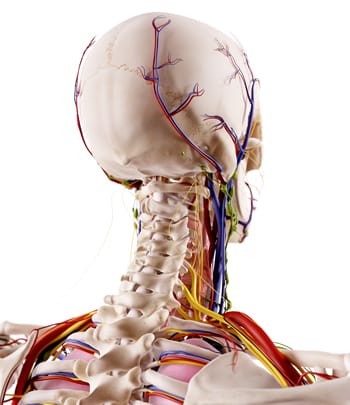
Made up of seven interlocking bones called vertebrae, your neck comprises the section of spine from the base of your skull (at the craniocervical joint) to the top of your upper back (at the first thoracic vertebra).
It’s made for movement in all directions so it’s notably unstable but it also supports the significant weight of the head. It relies (almost too heavily) on ligaments providing stability which also means that it is very susceptible to injury–more so than any other area of the spine. Good neck function is only possible as a result of the successful interaction between the various systems that incorporate your muscles, fascia and other connective tissues, the discs that sit between the vertebrae, and your nervous system. Keeping all of these components functioning well is crucial for the stability of your spine.
The axial spine refers to the upper section of your cervical spine, from the base of your skull down to the C2 vertebrae. This is the region where most flexion (chin to chest), extension (chin to the sky) and rotation is possible.
Using the Crab Reach for Improved Cervical Spine Motion
Animal Flow’s Form Specific Stretches focus on strength through movement, making them the perfect choice for improving controlled range of motion. When it comes to the cervical spine, there is almost no better movement in the program than the Crab Reach. Here’s why.
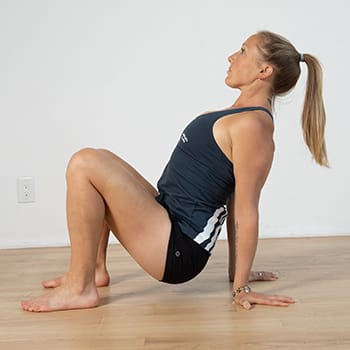
Static Crab
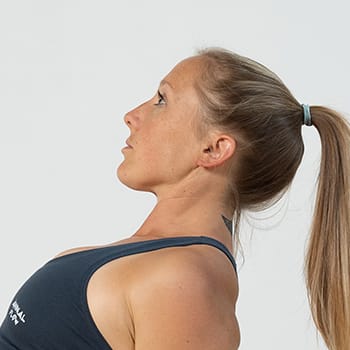
Close up of head and neck alignment
1. Starting from a Crab base position allows you to retract the chin (pulling it in towards the neck) and slightly tilt the rear of your head back and down (into a small amount of extension). This is opposite to the forward head position that contributes to Text Neck Syndrome so is truly beneficial for almost anyone.
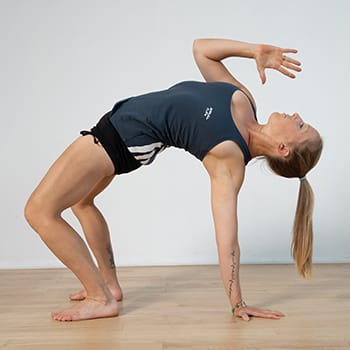
3-Point Bridge

Close up of neck flexors maintaining head position
2. Pause in the 3-Point Bridge phase of Crab Reach. With your eyes to the sky and your neck long, you’ll likely feel the muscles on the front of your neck (your neck flexors) begin to work a little harder as they help to keep your head from falling toward the ground. Don’t rush past this phase; spend some time here to self-assess how it feels.
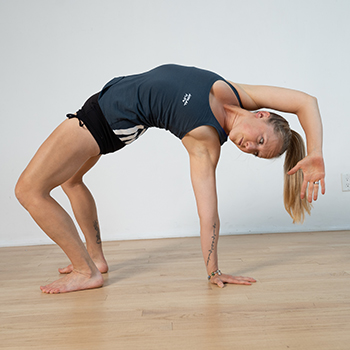
Crab Reach
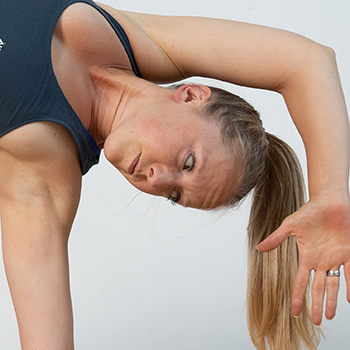
Close up of Crab Reach end position
3. As you continue into the end position, you’ll firstly tilt your head back (into extension) before morphing that into rotation. Is there a point where you feel discomfort? How smoothly can you blend the first action (extension) into the second (rotation)?
Try incorporating some slow Crab Reaches into your morning routine by performing 4-6 repetitions on each side while focusing specifically on your neck. Having the ability to move your head and neck through as much pain-free motion as possible, with as much control as possible, is a great sign that you’re well on your way to a strong and flexible neck that’s built to last.
For a free video tutorial on the Crab Reach and other introductory AF movements, check out Animal Flow On Demand. Starting from just $19.95 a month, you can access the entire library of movement tutorials plus full length classes and more.
